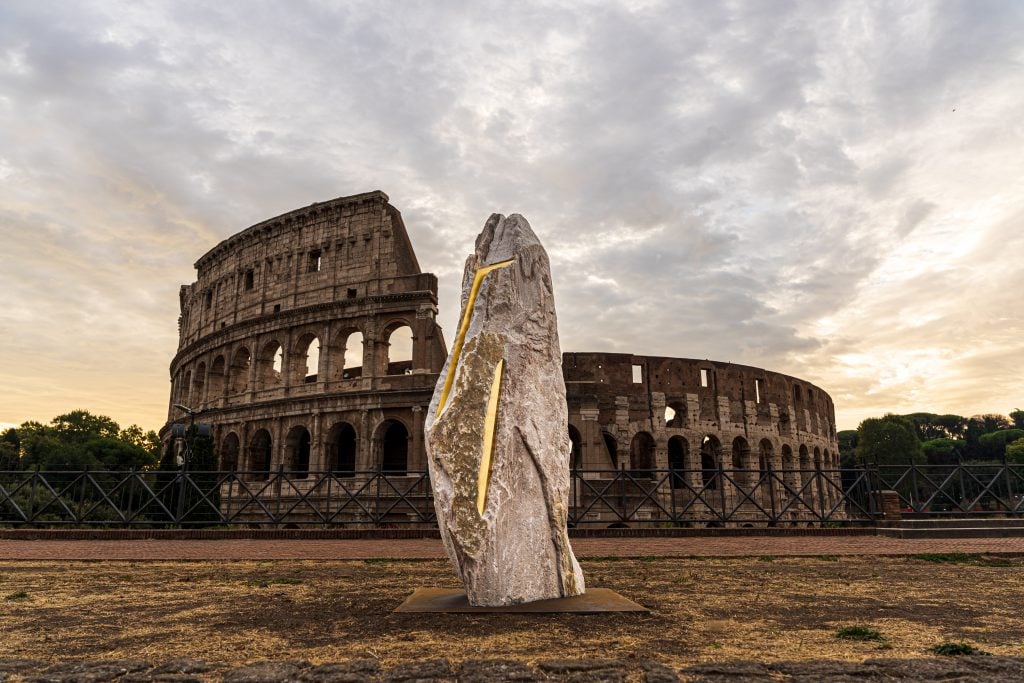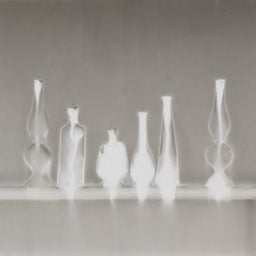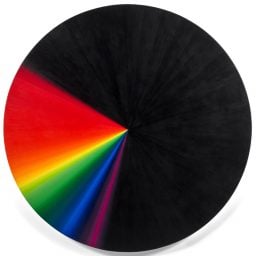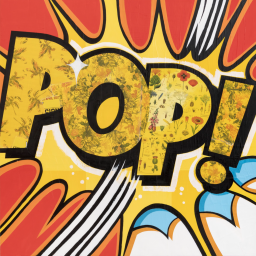Every month, hundreds of galleries add newly available works by thousands of artists to the Artnet Gallery Network—and every week, we shine a spotlight on one artist or exhibition you should know. Check out what we have in store, and inquire for more with one simple click.
What You Need to Know: On view through January 14, 2024, the exhibition “Mattia Bosco: Korai” sees the artist’s recent sculptures installed across various sites in the Colosseum Archeological Park (ParCo) in Rome, Italy. Set against the iconic ruins of the Roman Empire, including the Colosseum, Temple of Venus, and Roman Forum, all of the works were made specially by the artist for the present event and their respective placements. The exhibition originated as part of ArtVerona’s “Level 0” project, wherein the fair invites museums and foundations to select one or more artists to promote with future programming or events. The 2021 edition of the fair, ParCo was chosen to participate, and the Manager of Exhibitions and Events Daniele Fortuna chose Bosco for the unique resonance between his work and the historical park. Artistics gallery, Bosco’s representing gallery, provided financial support to help the exhibition be brought to life.
About the Artist: Italian artist Mattia Bosco (b. 1976) was born to artist parents—his father a painter and his mother an art restorer—who taught him gold leaf gilding among other traditional techniques. An early student of philosophy, his artistic practice is informed by theories around aesthetics and creative production. Initially working in ceramic, he ultimately began working predominantly with—and recognized for—his stone sculptures. Recalling the practices of Old Master sculptors, Bosco begins each work seeking out specific pieces of rock from marble quarries himself. Inspired by the natural material, he is drawn to individual rocks he deems have “potential,” thus bestowing a millennia-old rock with a new life as art. A hallmark of his work, Bosco frequently brings attention to unique points and surfaces of the chosen material by adding gold or silver leaf, emphasizing the sheen and sparkle of mica present in the rock. “For me,” said Bosco, “sculpture is meeting between two parts of the world, collaborating in an interplay of forces. And sculpture is the place where these tensions, the desire, and this journey of medium to form come together.”
Why We Like It: With a practice centered on using marble and gold and silver leaf, Bosco’s sculptures have a unique capacity to dialogue with the sites they are installed in at ParCo. Simultaneously part of and distinctly separate from the surrounding stone architecture, the collection of works included in “Korai” play on ideas around time, a recurring theme in Bosco’s practice. Utilizing a material that has a history within the context of classical art, each sculpture is passively minimalistic—a byproduct of Bosco’s respect for the integrity of each stone—and purposefully carved juxtaposed angles and positioning seemingly transcend any codified historical tradition. The result is a seamlessly immersive experience for visitors to ParCo; Bosco’s column sculptures “are at home” within the Roman architecture, accentuating and in some respects enlivening the space rather than intruding or competing with it.
See installations of the work below.
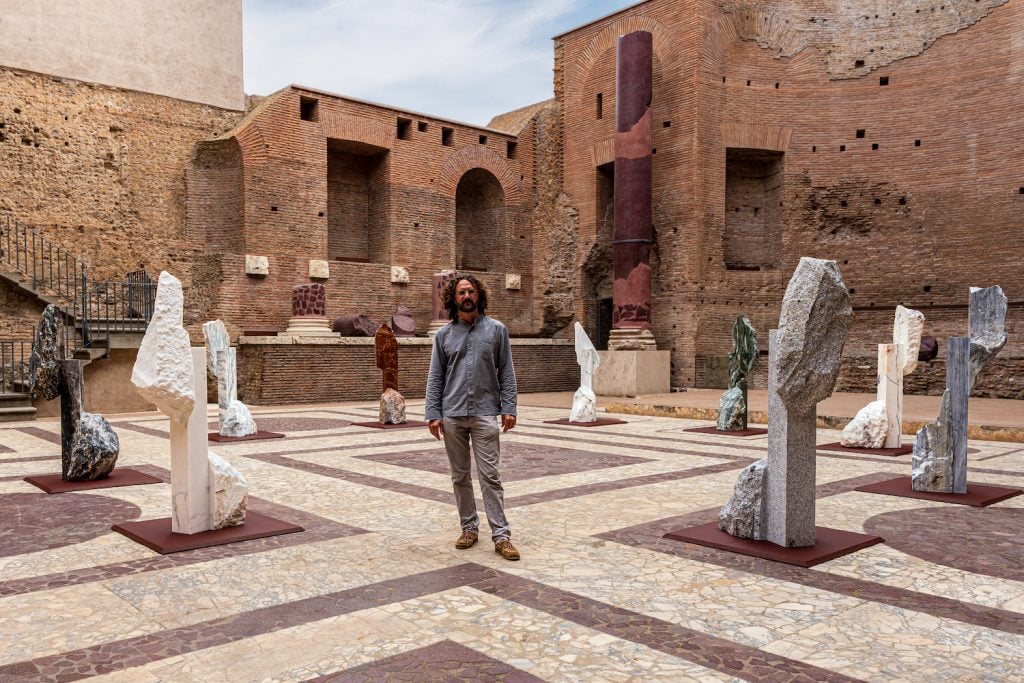
Artist Mattia Bosco (2023). Courtesy of Giuseppe d’Aleo.
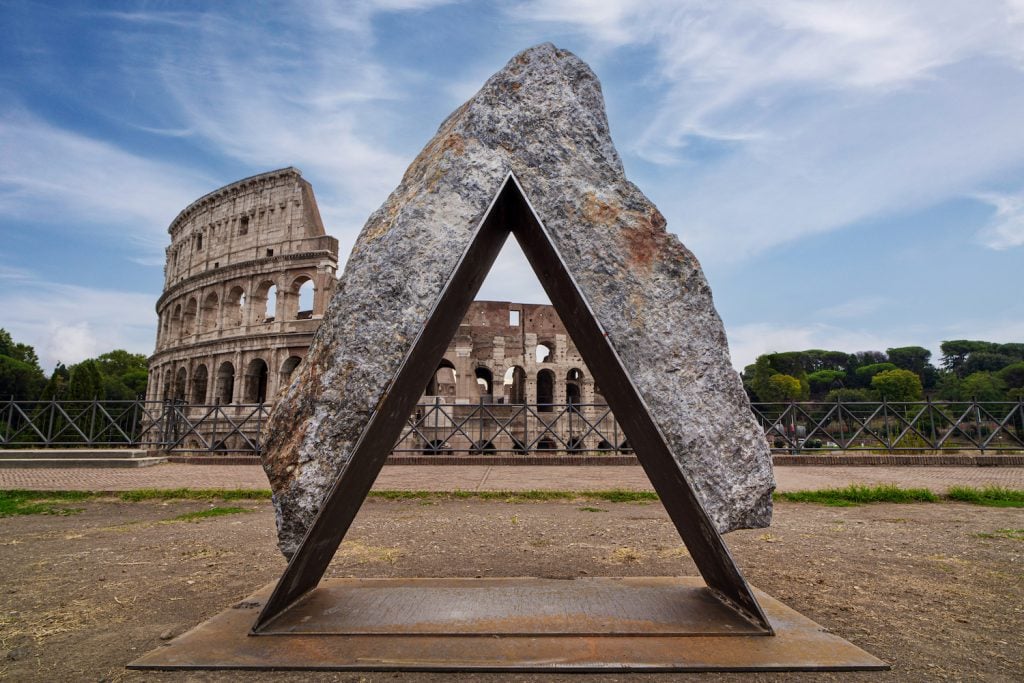
Installation view of Mattia Bosco, Stonegate (2023). Courtesy of Giuseppe d’Aleo.
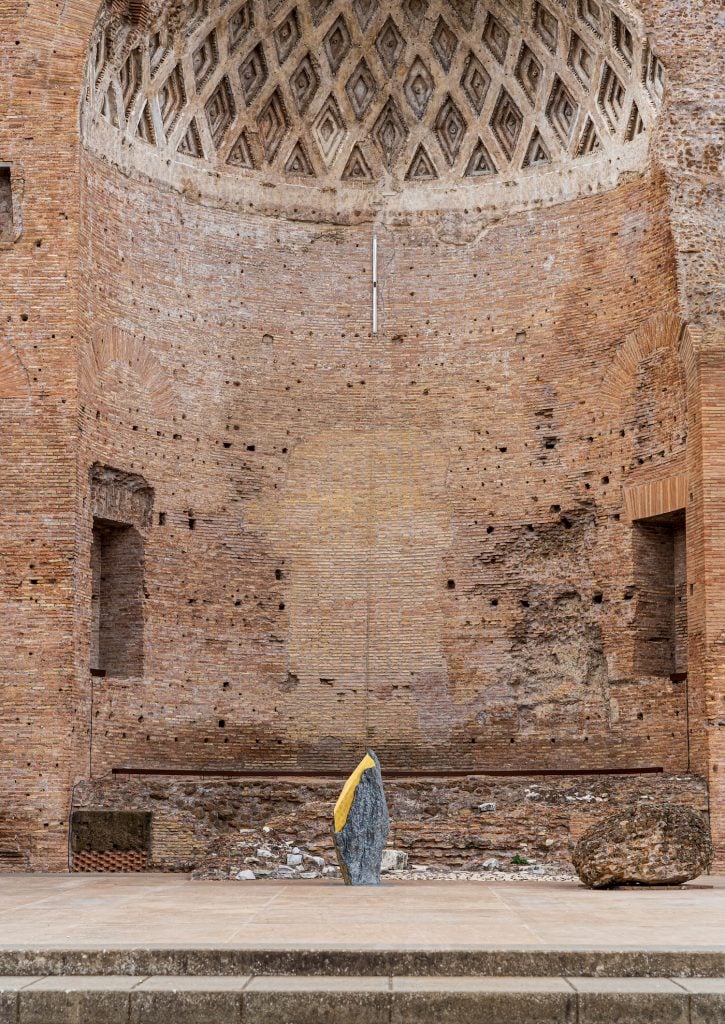
Installation view of Mattia Bosco, Sezione Aurea R1 (2023). Courtesy of Giuseppe d’Aleo.
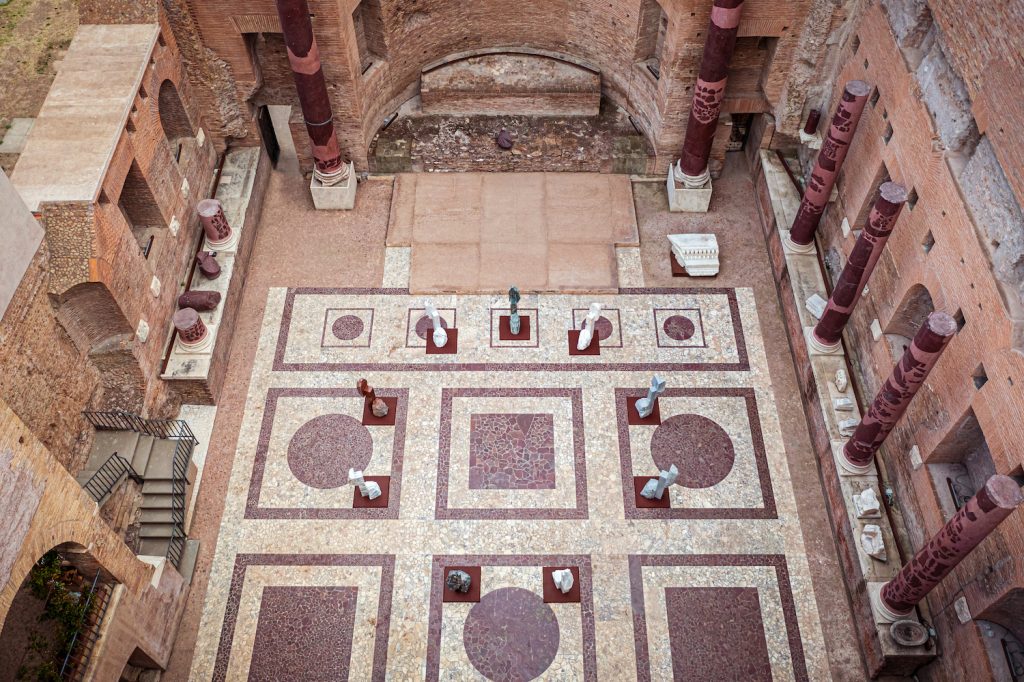
Installation view of “Mattia Bosco: Korai” (2023). Courtesy of Giuseppe d’Aleo.
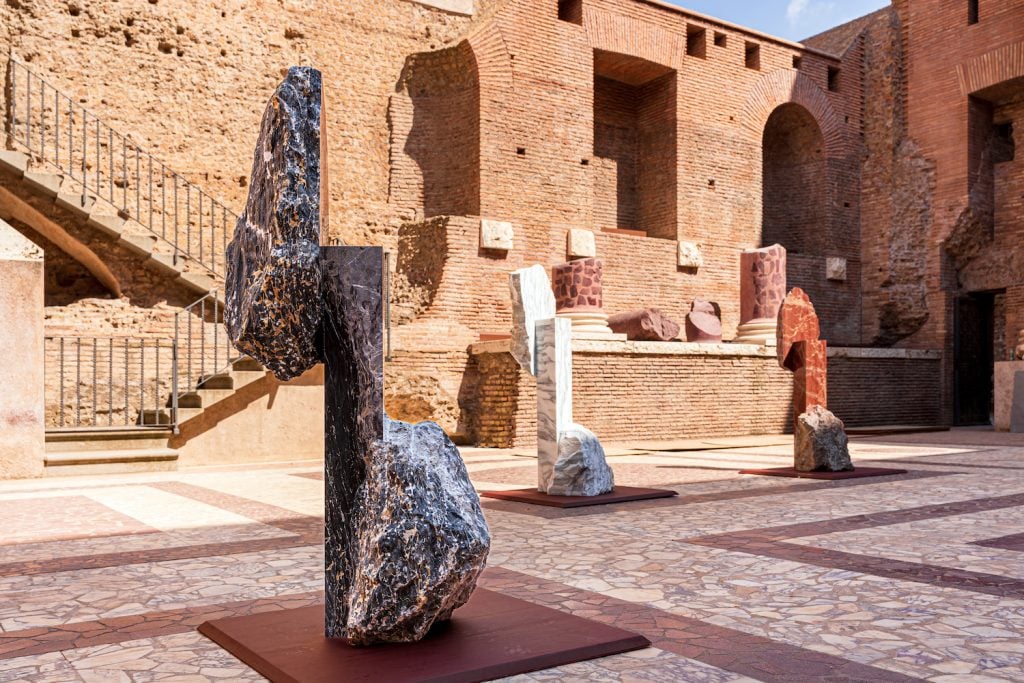
Installation view of “Mattia Bosco: Korai” (2023). Courtesy of Giuseppe d’Aleo.
“Mattia Bosco: Korai” is on view at the Colosseum Archeological Park, Rome, Italy, through January 14, 2024.
